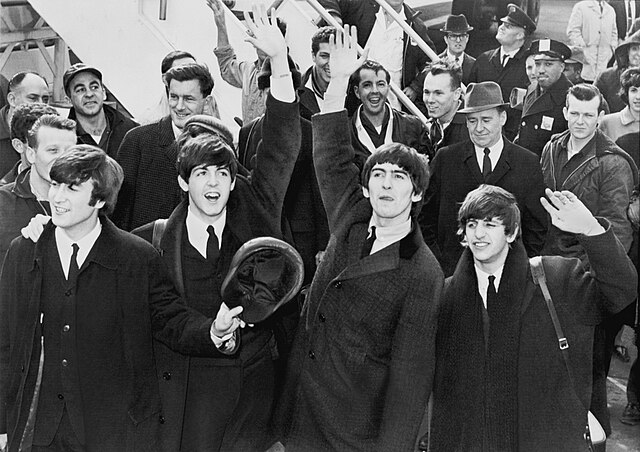Recording practices of the Beatles
The studio practices of the Beatles evolved during the 1960s and, in some cases, influenced the way popular music was recorded. Some of the effects they employed were sampling, artificial double tracking (ADT) and the elaborate use of multitrack recording machines. They also used classical instruments on their recordings and guitar feedback. The group's attitude towards the recording process was summed up by Paul McCartney: "We would say, 'Try it. Just try it for us. If it sounds crappy, OK, we'll lose it. But it might just sound good.' We were always pushing ahead: Louder, further, longer, more, different."
George Harrison, Paul McCartney and John Lennon with George Martin at EMI Studios 11 August 1964
Abbey Road Studio Two.
The Beatles were an English rock band formed in Liverpool in 1960, comprising John Lennon, Paul McCartney, George Harrison and Ringo Starr. They are regarded as the most influential band of all time and were integral to the development of 1960s counterculture and the recognition of popular music as an art form. Rooted in skiffle, beat and 1950s rock 'n' roll, their sound incorporated elements of classical music and traditional pop in innovative ways. The band also explored music styles ranging from folk and Indian music to psychedelia and hard rock. As pioneers in recording, songwriting and artistic presentation, the Beatles revolutionized many aspects of the music industry and were often publicized as leaders of the era's youth and sociocultural movements.
The Beatles in 1964; clockwise from top left: John Lennon, Paul McCartney, Ringo Starr and George Harrison
Main entrance at EMI Studios (now Abbey Road Studios, pictured 2007)
McCartney, Harrison, Swedish pop singer Lill-Babs and Lennon on the set of the Swedish television show Drop-In, 30 October 1963
The Beatles arriving at John F. Kennedy International Airport, 7 February 1964






